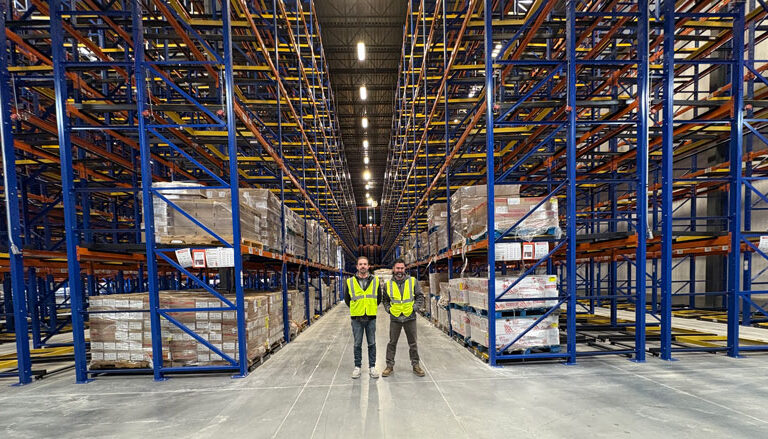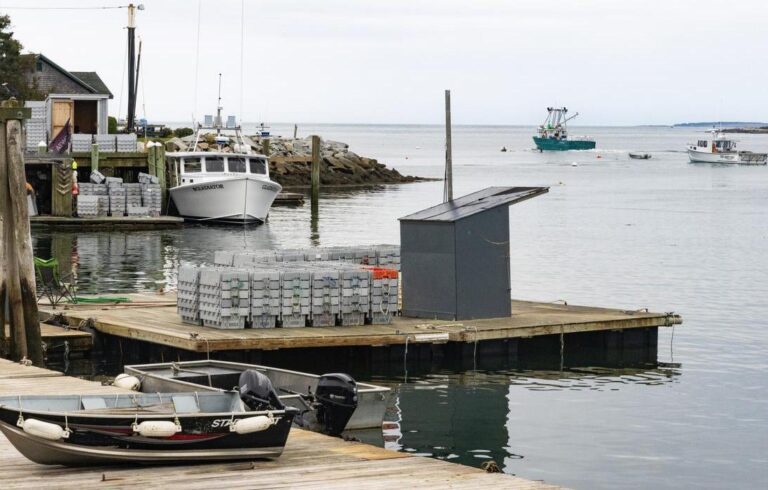Since the start of this century, many things have changed for Bigelow Laboratory for Ocean Sciences—scientists have come and gone, new research and technologies have brought more insights, and a move from McKown Point to its current home in East Boothbay came in 2012—but one thing has remained the same: Every week or two scientists from Bigelow make their way during high tide to a dock near the state’s Department of Marine Resources in West Boothbay Harbor.

There the scientists collect ocean water as part of the lab’s Booth Bay Time Series, a study that examines the long-term physical and chemical changes in the waters of the Gulf of Maine and changes in population of tiny organisms called phytoplankton that play an important role in the ocean by producing oxygen, sequestering carbon, and providing a food source at the base of the marine food web.
The research tools the scientists use to probe the changing ocean—flow cytometry and imaging flow cytometry, and the insights they enable—were the topic of the second presentation in Bigelow’s annual summer series, Café Sci, held in July at the Opera House at Boothbay Harbor due to construction happening at Bigelow’s East Boothbay campus.
One of the first scientists to participate in the Booth Bay study, Nicole Poulton, a phytoplankton ecologist, explained to the Café Sci audience how Bigelow scientists pioneered flow cytometry and imaging flow cytometry.
Developed for use in the biomedical industry in the mid-20th century, flow cytometry uses lasers to analyze individual cells. In the early 1980s, Clarice Yentsch, one of the cofounders of Bigelow, pioneered the use of flow cytometry to study phytoplankton in the marine environment.
The advantage of using flow cytometry, said Poulton, who is director of the Center for Aquatic Cytometry at Bigelow, is the rapidity at which particles can be quantified and identified. Use of flow cytometry has resulted in important revelations about phytoplankton, such as that a marine cyanobacteria called Prochlorococcus is one of the most abundant photosynthetic organisms across the globe.
“Every fifth breath that you take comes from this organism. So it’s very, very important.”
Since that discovery in the late 1980s, scientists have been modeling this organism because it’s critical to nutrient cycles, also called biogeochemical cycles, that various organisms, including humans, depend on. Prochlorococcus is also responsible for 20% of oxygen on the planet, says Poulton.
“Every fifth breath that you take comes from this organism. So it’s very, very important,” she said.
As the scientists at Bigelow continued to use and encourage others to use flow cytometry in the 1980s and 1990s, its scientists expanded the technology.
In the mid-1990s, Yentsch and research scientist Michael Sieracki worked with Christian Sieracki to create an imaging flow cytometer built from parts purchased at a local Radio Shack that combined digital imaging, flow cytometry, and microscopy. Imaging flow cytometry captures photographs of individual particles and measures and counts them.
Today, Poulton and other scientists at Bigelow and elsewhere are using flow cytometry and imaging flow cytometry to try to understand how the ocean is changing and the impacts of ocean warming. For example, using flow cytometry and imaging flow cytometry to monitor and study phytoplankton allows scientists to understand shifts, and potentially, changes, in the food web, Poulton said. These tools also can be used to detect and identify microplastics in the water and to validate satellite data of the ocean’s surface.
While flow cytometry and imaging flow cytometry revolutionized slow and tedious manual processes late in the last century, looking to the future, these technologies hold even more promise, in particular if paired with autonomous boats or drifters and artificial intelligence, Poulton said.
“If an iPhone can detect who’s in the audience, we can do this with phytoplankton,” she declared. “I do believe in the next 50 years … these instruments will be collecting data for us, analyzing it for us and spitting back the data to us in real-time so that we can understand the distribution and the composition of the phytoplankton, and assess the changes in the ecosystem.”
For coastal communities and those who make their living from the ocean, Poulton said in an email following the presentation, the data from real-time monitoring of phytoplankton in coastal regions could serve to alert coastal communities and fisheries of the presence or absence of harmful algae that could directly impact a local fishery.
“This information,” she wrote, “could directly impact local businesses as to when harvesting would take place.”
To watch a recording of Poulton’s Café Sci presentation and the other presentations in the four-part series, go online to Bigelow’s YouTube channel.





